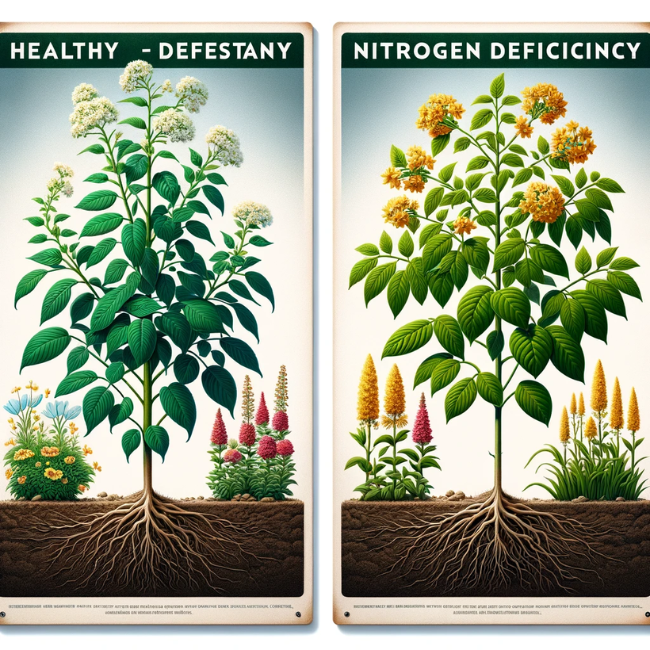Urea fertilizer is a staple product of modern agriculture; its addition of nitrogen, an essential nutrient for plant growth and development, massively increases crop yields by facilitating the more intense and district-wide practices of modern farming.
Urea, or carbamide, as it is chemically called, is the most popular nitrogenous fertilizer in the world, because of its high solubility in water and its resulting infinite versatility of use: granules, pellets, solutions and even sprays. It is in water solution that urea becomes the most effective: 1 kilo of urea added to one ton of soil water contains, in nitrogen content, around 46 percent of what one ton of nitrogenous compounds, such as hoof or fecal remains, would. This is why urea was called a concentrated nitrogen source in a fast and easy-to-use form. As a salt, it is nothing but the carbonic skeleton of uric acid combined with ammonia. When applied to soil, it must be converted to ammonia and carbon dioxide first, in a process known as hydrolysis, by the action of soil enzymes, before being incorporated into plants.
What is Urea Fertilizer?
Urea fertilizer is a synthetic organic compound that plays a pivotal role in the nutrition of plants by providing them with the essential nutrient nitrogen, crucial for their growth and development.
Definition and Composition
Urea, the chemical name for carbamide, is formed by combining ammonia and carbon dioxide with high pressure and under high temperature, creating a substance that has approximately 46 percent of its weight as nitrogen. This makes it the most concentrated nitrogenous urea that farmers can purchase. Urea is typically sold as small white granules or pellets that easily dissolve in water, a valuable feature in many agricultural settings.
The Role of Urea in Plant Nutrition

This is because nitrogen is a key part of amino acids, the raw materials of proteins. Proteins are fundamental to plant growth and reproduction. They provide the building blocks that make up stems, leaves, blossoms, tubers, stalks, and more. They are in the chlorophyll that plants convert sunlight into energy through photosynthesis. In short, nitrogen starves plants. Without sufficient nitrogen, a plant cannot produce enough chlorophyll, which means it cannot grow butts, leaves, or flowers, or even continue to live. The results are leggy growth and pale, yellow leaves. This sad state of affairs is known among gardeners and crop scientists as nitrogen deficiency.
Urea fertilizer acts as a booster for photosynthesis, with the nitrogen directly nourishing the process itself so that those adorable plants you get from a four-dollar pot grow faster and lusher with much greener leaves.
Enhancing Plant Production: The nitrogen in urea combines with various plant proteins and metabolites, including chlorophyll, hormones, and other molecules, making them easier to form and more abundant. These growth-promoting substances encourage greater and more efficient photosynthesis and stimulate the process of cell division. The end result is much stronger plant growth and usually 50-100 percent higher yields.
Increase Quality of Produce: In addition to increasing yields, urea could increase the quality of produce. Many crops grown under nitrogen deficiency are not only lower in yields, but also lower in taste and color, and higher in fiber, which can be unfavorable for the marketability of fresh produce.
Capacity to be easily used in a variety of ways: Urea’s high solubility and concentration make it amenable to use in many forms – as a base fertilizer that can be incorporated into the soil or as a top dressing that can be spread around existing plants (as a dry material or after being dissolved in water to be used a foliar spray). As a result, it is utilized across a broad range of agricultural, horticultural, and ornamental plant varieties.
Overall, urea is an important component of modern agriculture, providing a nitrogen-rich fertilizer that promotes the growth of green leaves (a source of oxygen for humans) and augments yields of starches, sugars, and oils that all provide essential nutrients. It is invaluable in terms of food security and agricultural productivity, globally.
Optimal Timing for Urea Fertilizer Application
Proper timing of urea fertilizer application is critical to maximizing its effectiveness and ensuring that plants receive nutrients when they are most needed for growth and development.
The Best Seasons for Urea Application
The best time to make urea application largely depends on the type of crops and climatic condition of the area. But in anyways the best time to make urea application has been discovered to be in three seasons.
- Spring: Most producers apply urea in the spring as temperatures rise and crops come to life. The nitrogen is applied at the time the plant can begin rapid growth. To achieve peak yields, most annual crops and vegetables are subjected to the green-wave phenomenon.
- Fall: For perennial crops (or certain winter cereals), the application of urea in fall speeds up its breakdown and brings it into the soil nutrition cycle before the next season. But it has to be done carefully so that the fertiliser is not lost in winter rains before it is taken up by the plants.
- Keeping away from Hot and Wet Weather: Avoid the application of urea during very hot weather or just before it rains because urea may volatilize and be lost as gas or washed away and lost to the surrounding. It will then become inefficient and also causes pollution.
Understanding Crop Growth Stages
Timing urea application according to crop growth stages is crucial for its effective use:
- Vegetative Growth Stage: This is the time when most annual plants need a large amount of nitrogen to maximize leaf and stem growth. The early application of urea ensures the availability of nitrogen when it’s needed for photosynthesis and biomass accumulation during the vegetative growth stage.
- Pre-Flowering and Flowering Stages: Adding urea just before, or during bloom, stimulates more flower production and the seeds (or fruit) that result from those flowers, thus higher yields.
- Post-harvest: Urea application after crop harvest helps perennial crops recover and prepare for future growth cycles, ultimately remaining healthy and productive.
Knowledge of these stages and their corresponding nutrient requirements can assist the farmer in appropriately timed and targeted application of urea, in turn boosting crop yields while maximizing fertilizer efficiency
Effective Urea Fertilizer Application Techniques
Effectively applying urea fertilizer is crucial for ensuring that the nutrients are used efficiently by plants. There are several methods available, each suitable for different types of crops and stages of growth.
Broadcasting Urea Over the Soil Surface
The broadcasting process entails spreading urea granules uniformly across the soil surface. This can be done manually or with a spreader. It is commonly performed before sowing seeds or during the early stages of crop establishment when plants are still young. The best results are achieved if rainfall or irrigation follows this practice as it causes the dissolution of granules and the leaching of nitrogen into the soil for easy uptake by roots.

Pros: Broadcasting is quick and applicable over wide areas. It ensures that all parts of the field have equal amounts of nitrogen which helps in germination and growth of seedlings.
Cons: For prevention of losses through volatilization (conversion to ammonia gas), urea should be applied under cooler temperatures or light rain so that it mixes well with soil after being washed down by rainwater.
Side Dressing Urea To The Plants
Side dressing means applying urea on topsoil near growing plants but not close enough to touch stems directly. Farmers use this method mainly for top-dressing crops at their vegetative stage when they require more nitrogen input.

Procedure: In most cases, a narrow strip beside rows where plants are growing is treated with urea and then lightly mixed into the ground or watered so as to bring nutrients closer to roots.
Merits: Side dressing lowers chances of losing nitrogen through volatilization besides reducing the risk associated with foliar contact leading to leaf burn.
Foliar Spraying: When And How?
This technique involves dissolving urea in water and then spraying it onto plant leaves directly. It assists in supplying plants with nitrogen through absorption by their stomata, especially during critical growth phases or when there is poor root zone availability due to adverse soil conditions.

Preparation: To prepare a foliar solution, dissolve suitable amounts of urea in water depending on sensitivity level and nutrient requirement for specific crops usually ranging between 0.5%-2%.
Timing: Early morning or late afternoon spraying is encouraged since lower temperatures reduce the chances of scorching leaves. Avoid application during hot sunny periods.
Advantages: Foliar feeding can be used as a quick fix for nitrogen deficiency because nutrients are delivered straight into plant tissues where they are required most and utilized immediately.
Every method has its own advantages which can be considered depending on crop type, growth stage, and prevailing conditions in the environment. When fertilizers are used correctly, more benefits are realized as this also reduces environmental pollution through wastage reduction.
Dos and Don’ts of Applying Urea Fertilizer
Applying urea fertilizer correctly is crucial for achieving optimal plant growth without causing harm to the environment. Here are some best practices and common mistakes to be aware of.
Urea Application
Right Dosage
The right amount of urea to use depends on the type of soil, the crop under cultivation, and the specific stage of growth. To know precisely how much nitrogen is required by the soil, it is recommended that a soil test be carried out. Over-application can be wasteful and injurious while inadequate nutrition for plants may result from under-application.
Calculation: Determine the volume of nitrogen required using soil test findings. Normally, urea should be applied at a rate ranging from 50 kg to 100kg per hectare though this may vary widely.
Timing for Maximum Effectiveness
When applying urea, timing is crucial since it helps to maximize its impact while minimizing losses through volatilization or leaching.
- Seasonal Timing: During the early stages of growth when nitrogen can be utilized for leaf and stem development. Additional applications may be needed prior to flowering as well as fruit setting stages.
- Weather Conditions: Apply during cooler spells with slight showers forecasted before or after which will aid in incorporating fertilizer into the ground.
Common Mistakes to Avoid
Overdosing and its Consequences
Excessive usage can lead to various problems such as:
- Nutrient Imbalance: Too much nitrogen inhibits the absorption of other essential elements like potassium; causing an imbalance in nutrient availability within the plant’s system.
- Environmental Impact: Leaching or runoff into surface waters where they accumulate causing pollution through eutrophication i.e., over nourishment leading to death fish due to lack of oxygen dissolved these habitats become unable to support life anymore thus being called dead zones eventually all organisms die off except some bacteria which continue decomposing organic matter releasing large quantities toxic gases including hydrogen sulfide methane ammonia carbon dioxide etcetera thereby further aggravating situation if left untreated this could lead extinction surrounding ecosystems including humans themselves too would not survive there either hence we must act now immediately without any delay whatsoever because time waits nobody forever unless something happens otherwise nothing will change until everything has been destroyed forever.
Environmental Considerations
Below are some environmental factors that should be taken into account when working with urea:
- Use of Inhibitors: It is advisable to apply urease inhibitors which slow down the conversion of urea into ammonia thereby reducing nitrogen loss to the atmosphere.
- Application Method: Side dressing or foliar applications are better options than broadcasting as they target specific areas within the fields hence minimizing wastage through volatilization caused by over-exposure of these regions during spraying operations; this also eliminates risk associated with excessive application where much may go unused due poor distribution resulting from uneven terrain among other factors like wind direction speed etcetera.
Following these guidelines will enable farmers and gardeners to achieve their desired crop outcomes while still keeping soil health and ecosystem integrity intact. Therefore, it is necessary that all users practice good farming methods so as to realize success in agriculture without harming nature around us at the same time.
FAQs About Applying Urea Fertilizer
The kg needed per ha can differ with soil fertility and crop requirement but usually falls between 50 and 150. Always ground your application on the results of soil tests and the needs of the crop.2. Can urea be applied before rain?
Yes, applying urea some hours before gentle rain starts ensures that it is incorporated into the ground thus minimizing loss through volatilization; however, in case of a heavy downpour immediately after this application may wash away urea leading to nutrient leaching.3. Can you mix urea with other fertilizers?
Urea can be mixed with other fertilizers although care should be taken not to mix it with calcium or magnesium-containing ones because ammonia may be lost.4. Does Urea burn plants?
Direct contact between leaves and high concentrations of urea leads to burns on plants. To avoid this, apply it on soil rather than putting it directly onto plants or dissolve it thoroughly in water when using foliar spray.5. How frequently should I apply urea?
The number of times you need to apply this chemical depends on the growth stage and nutrient uptake by crops. It is commonly done during key growth periods like planting, pre-flowering, or post-harvest for perennial crops.
Recap of Key Points:
Urea is a highly effective source of nitrogen, crucial for plant growth.
Correct application methods, such as broadcasting, side dressing, and foliar spraying, help optimize nutrient uptake.
The application must match the crop’s nutrient demand and weather conditions to maximize efficacy and minimize losses.
Encouragement to Follow Best Practices for Optimal Results:
Adhering to the outlined best practices and avoiding common pitfalls are vital for achieving the desired agricultural outcomes and sustaining soil health. You can maintain productive and environmentally responsible farming practices by continuously educating yourself and adapting to new insights and technologies in fertilizer management. Let’s commit to these sustainable approaches to ensure that our agricultural practices contribute positively to our environment and economy.







